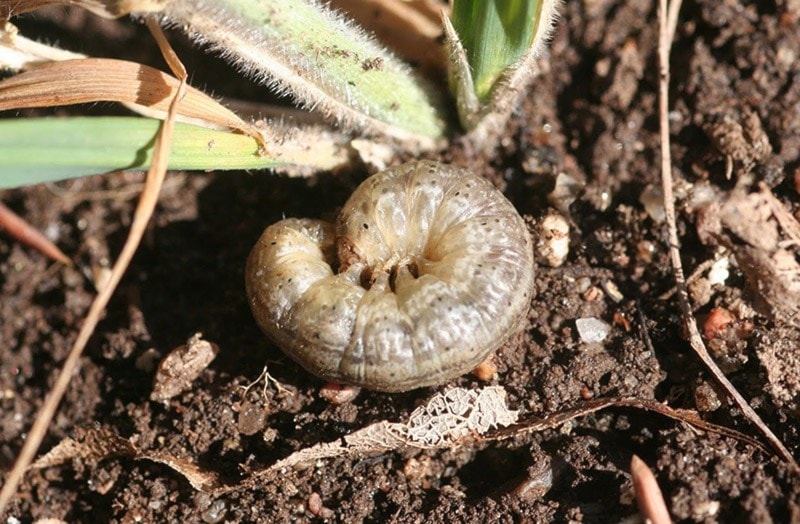An infestation of black army cutworms in the Takhini River valley and Lake Laberge area has some residents keeping a close eye on their gardens.
There are several species of cutworm native to the Yukon, said Randy Lamb, an agrologist and insect specialist with the Yukon government’s agriculture branch.
The worms target leafy plants and earn their name through their destructive habit of feeding. They cut seedlings off at the base and devour them, leaving only a little green nub poking up out of the soil.
“That’s why they call them army cutworms … they move en masse,” he said.
Most species feed independently but black army cutworms have an unusual quirk. The pests can amass by the thousands in a squirming black mass, feeding and moving together, like an actual army. This unusual behaviour is a protective adaptation against predators such as robins. Moving in such huge numbers reduces an individual’s chance of being eaten, said Lamb, because even a very hungry bird can only eat 20 or 30 bugs at one time.
“People with market gardens should be on the lookout,” he said.
Black army cutworms do not always amass in this way, said Lamb, but only when there is a sudden increase in the population, similar to lemmings or locusts. The insects have exhausted their usual food source — precisely what they eat in non-swarm years is not entirely known — and are on the move in order to feed.
“Pest of the year, that’s what I’m calling it,” said Lamb.
These population increases are part of a natural cycle, said Lamb, occurring every every five to 10 years. The last reported cases of outbreaks like this were in the late 1990s.
“(The cutworms) have been there all along,” he said. “It’s just that you don’t usually see more than five or 10 at a time.”
“If you find a hot spot, there can be thousands.”
The worms emerge in late April or early May and finish their feeding in mid-June. Lamb expects the cutworms to be finished their feeding cycle in the next week or so.
Lamb said there are environmentally-friendly options for pest control, such as specialized bacteria that only target moth larvae. He warns against using standard pesticides, because by the time they are applied the worms will either have moved on or pupated.
Black army cutworms are black with a grey stripe and active during the day. What plants the insects find most attractive during this swarming period is unknown, said Lamb. The worms seem to prefer the Takhini and Shallow Bay areas.
If you find the worms in your garden, you can call Yukon Agriculture at 667-5838 to report what kind of plants they are feeding on. This information can be useful in predicting and managing future outbreaks of black army cutworms, said Lamb.
Contact Lori Garrison at lori.garrison@yukon-news.com
